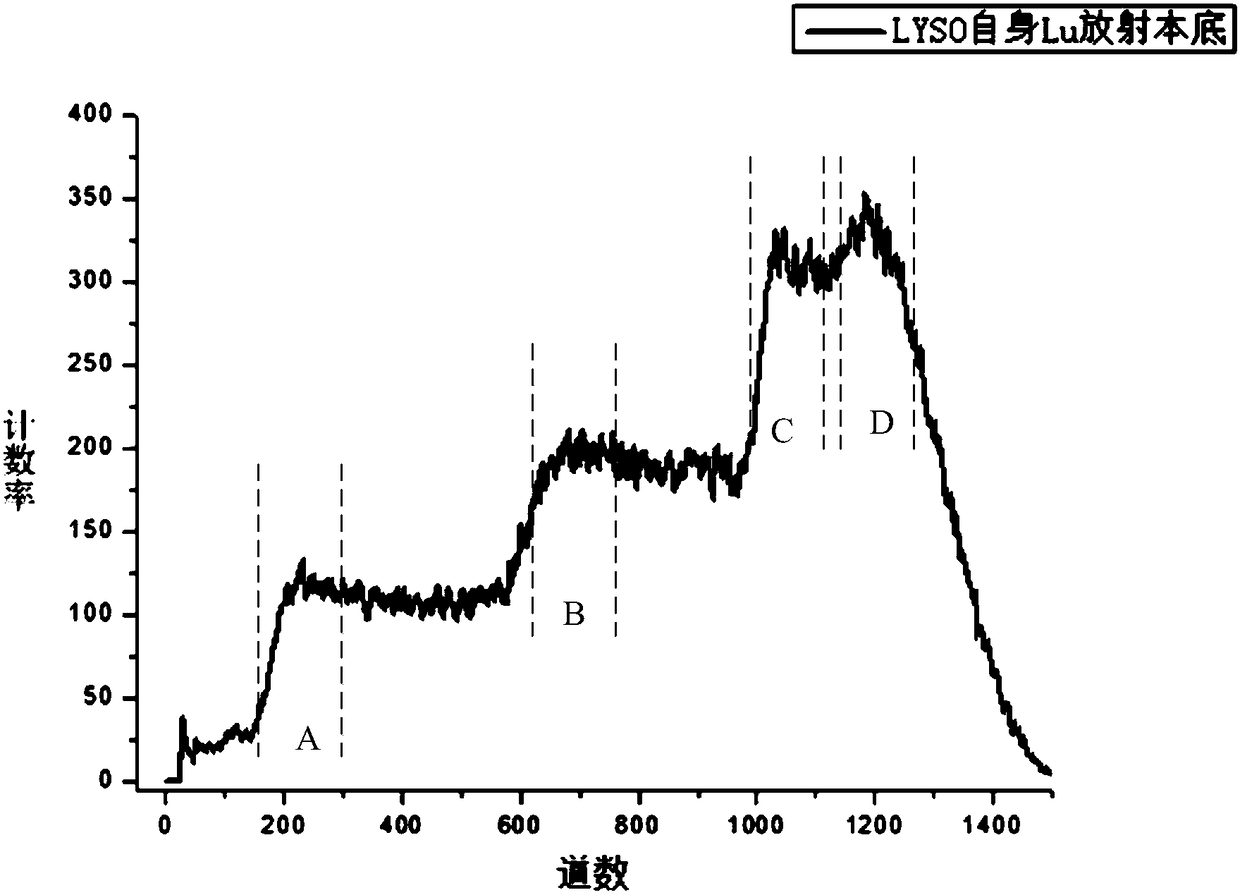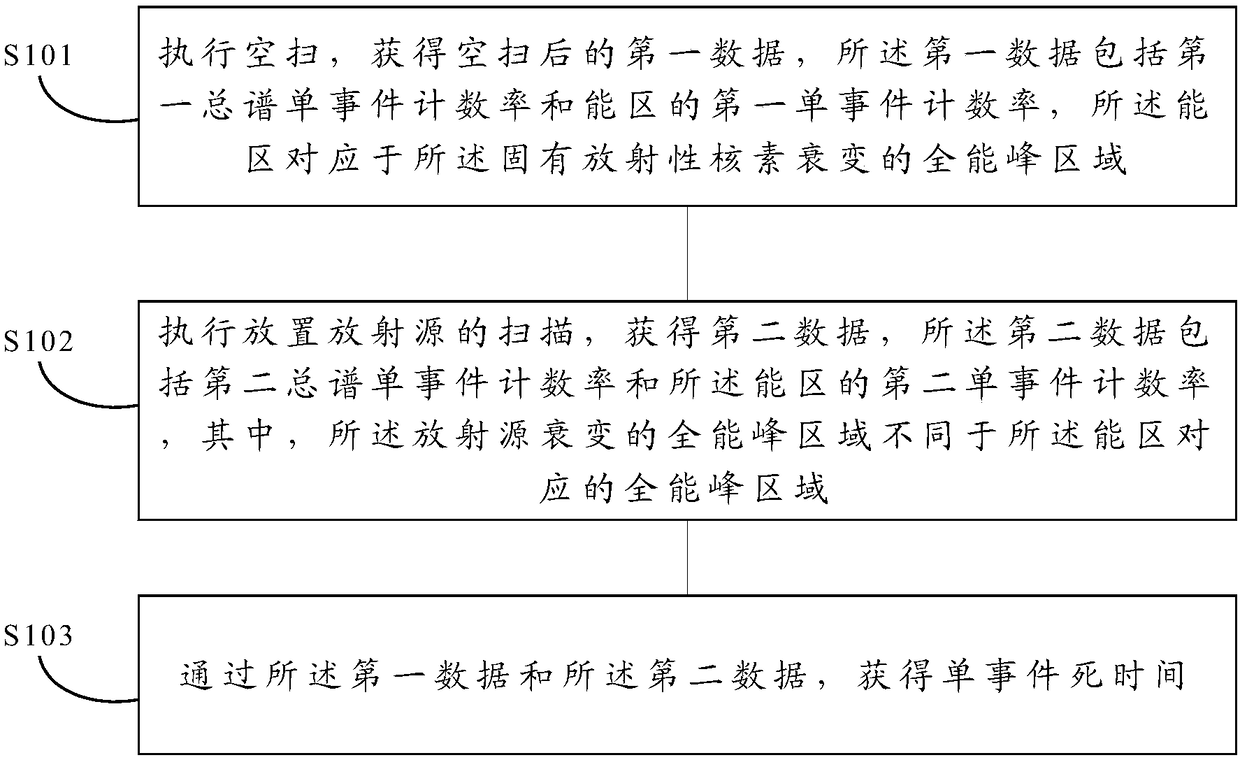Single event dead time detecting method and device
A detection method and a single-event technology, applied in the field of medical imaging imaging and processing, can solve the problems of long time and high difficulty of testing
- Summary
- Abstract
- Description
- Claims
- Application Information
AI Technical Summary
Problems solved by technology
Method used
Image
Examples
Embodiment 1
[0034] refer to figure 2 As shown, in step S101, a blank scan is performed to obtain the first data after the blank scan, the first data includes the first single-event count rate of the first total spectrum and the first single-event count rate of the energy zone, and the energy zone corresponds to the The region of the all-energy peak that describes the decay of intrinsic radionuclides.
[0035] The first data is the counting data obtained after the PET system performs a scan. This scan is an empty scan. An empty scan refers to a scan performed without placing any radiation source in the field of view of the PET detector. In this way, in the first After the second scan, all the photons generated in the detector are produced by scintillation crystal self-decay.
[0036]After the empty scan, the PET system collects the counting data. From the counting data, the single-event counting rate of the first total spectrum and the first single-event counting rate of the energy regio...
Embodiment 2
[0059] The difference from Embodiment 1 is that there are multiple energy zones used for counting in this embodiment, and the single-event dead time is determined by counting rates of multiple energy zones. The different parts from Embodiment 1 will be described in detail below. The same parts will not be repeated.
[0060] In step S201, the first data after the empty scan is obtained, the first data includes the first single-event count rate of the first total spectrum and the first single-event count rate of a plurality of energy regions, the energy regions correspond to the inherent radionuclide The all-energy peak region of decay.
[0061] In this embodiment, there are multiple energy zones, that is, the single-event count rate of multiple energy zones is obtained. In a specific example, the scintillation crystal of the detector is a LYSO crystal. In this step, after obtaining the empty scan, obtaining the first data includes: the first total spectrum single-event count r...
PUM
 Login to View More
Login to View More Abstract
Description
Claims
Application Information
 Login to View More
Login to View More - R&D
- Intellectual Property
- Life Sciences
- Materials
- Tech Scout
- Unparalleled Data Quality
- Higher Quality Content
- 60% Fewer Hallucinations
Browse by: Latest US Patents, China's latest patents, Technical Efficacy Thesaurus, Application Domain, Technology Topic, Popular Technical Reports.
© 2025 PatSnap. All rights reserved.Legal|Privacy policy|Modern Slavery Act Transparency Statement|Sitemap|About US| Contact US: help@patsnap.com



